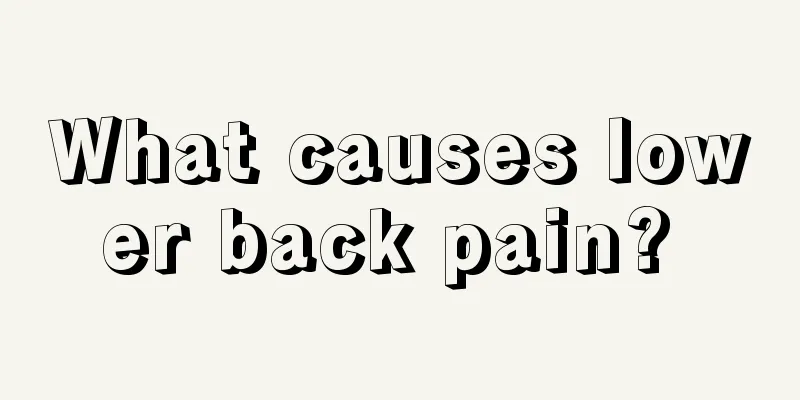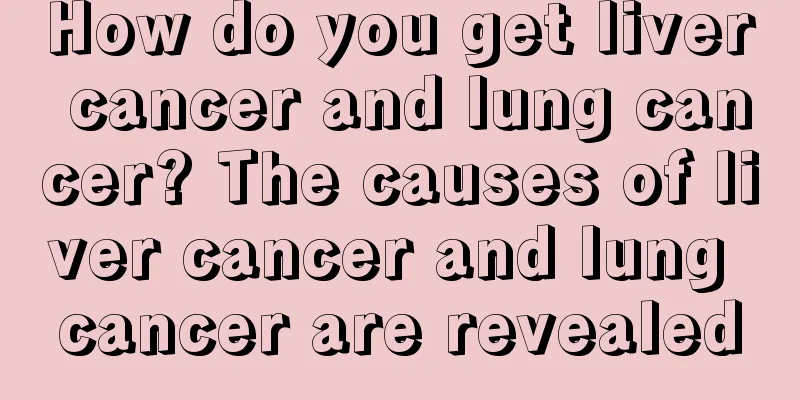Abnormal bone metabolism

|
Everyone knows that the human body needs metabolism to maintain normal daily activities. There are many bones in the human body that make up the human skeleton. These bones may look static, but they are actually an important part of human metabolism. If bone metabolism is abnormal, it will seriously affect the health of the human body. So what are the general causes of abnormalities such as bone metabolism disorders? Human skeleton There are many bones in the human body with different shapes. They look solid and unchanging, but in fact bone cells are constantly involved in various metabolic processes throughout a person's life and go through different periods of bone growth. Structurally, bones are composed of many bone cells. Near the bone marrow cavity, there is a type of bone cell called osteoblasts, which continuously grow new bone cells under the stimulation of external forces. Around osteoblasts, there is a type of osteoclast whose function is to continuously reabsorb bone cells. The relationship between these two types of cells is just like building a new house, which requires demolishing the old house to make room for the new one. Abnormal bone metabolism In a healthy human body, osteogenesis and osteogenesis reach a dynamic balance, thus maintaining normal metabolism of bone tissue. If children are malnourished and lack sufficient vitamin D during their growth and development, their bone growth will become very weak. This condition is medically called rickets, commonly known as osteomalacia. Vitamin D can replenish minerals such as calcium and phosphorus needed for bone development into the bones, making the bones dense and strong. Causes of abnormal bone metabolism However, vitamin D must be directly exposed to sunlight on the skin to be activated to help bone tissue absorb minerals. Some adults may also develop osteomalacia because they suffer from colitis, which causes their intestines to have poor ability to absorb minerals. For middle-aged and elderly women over 50 years old, as the estrogen level in the body decreases, more calcium is lost in the bones, so the bones become more and more porous, sometimes just like a honeycomb. If you are not careful, the hip and femur can easily be fractured. In fact, under the action of external force, bones are very easy to be injured, but the degree of injury is different, and various fractures will be formed. The most serious one is of course a transverse or comminuted fracture, which means that a bone is broken into several pieces; a slightly lighter one may be a greenstick fracture. This type of injury happens more often in children because their bones are softer and more tender. When under the action of external force, the bone bends excessively, causing one side to be broken and lifted up like a tender branch, while the other side is still connected, so that the injured bone will not be displaced significantly. However, people are more likely to experience more minor bone injuries throughout their lives. In this case, hairline cracks have formed on the bone surface, but this type of damage is usually not visible on X-rays. Many minor fractures are not immediately noticeable by the patient at first, but only attract the doctor's attention when pain occurs later. Some strain fractures are caused by bones being repeatedly impacted by external forces, resulting in small cracks. Over time, the extent of the damage finally exceeds the bone's ability to repair itself, and symptoms begin to appear. There is also a common bone injury called chronic spinal compression fracture. The patient already has osteoporosis, which causes the originally square spine to become higher at one end than the other under the pressure of gravity. This changes the physiological curvature of the entire spine, resulting in breast augmentation, hunchback and other pathological conditions. Degenerative dislocation of the spinal joints is another type of bone injury. The spine itself is an intricate link made up of vertebrae connected up and down. It protects the spinal cord as it runs through it from top to bottom, and extends the nerves to various parts of the body through the intervertebral foramina. Vertebral joint dislocation can compress the nerve roots and cause pain in the neck, shoulders, waist and back muscles. Of course, femoral head necrosis itself is not necessarily caused by bone metabolism. However, no matter what the cause of femoral head necrosis, the femoral head will lack blood supply, and the metabolism of osteoblasts and osteoclasts in the femoral head will be abnormal. They will try their best to make up for the metabolic disorders caused by nutritional deficiency. Therefore, the treatment of femoral head necrosis requires not only professional blood nutrition for the femoral head and bone growth drugs, but also the key to restoring bone metabolism in its original healthy state. Otherwise, no matter how perfect the femoral head treatment is, if the bone metabolism is abnormal, abnormal lesions will appear in the femoral head sooner or later. This is also the key step in the treatment of 4H Tongluo Shenggu Therapy. |
<<: Why do my fingers feel numb when I wake up in the morning?
>>: The three major metabolic pathways of sugar metabolism
Recommend
Can I still drink mineral water that has been left overnight?
Can I still drink mineral water that has been lef...
What to do if I have bloating and can't defecate
Sometimes eating too much can cause discomfort in...
The hazards of electric baking pan
Electric baking pans are generally harmless, but ...
What are the effective treatments for sciatica
Anyone who has suffered from sciatica knows how p...
Pathogenesis of post-hepatic jaundice
I believe everyone must be curious about the path...
How to relax muscles after exercise
Whether you are a person who is used to exercisin...
The best way to remove a mole yourself
There are always some black moles on the surface ...
Side effects of Germanium stone steaming
Many people like sweat steaming very much, becaus...
Raised acne scar on nose
I believe that many people have had acne, either ...
Are milk snakes poisonous?
I believe everyone is familiar with the animal sn...
What exercises before bed can help you sleep
If you want to have a good sleep quality, you mus...
What fruit can reduce swelling and dissipate blood stasis
Many foods that people eat daily have unique effe...
Routine care for patients with pituitary tumors
For diseases such as pituitary tumors, surgical t...
Is it okay to wash your eyes with tap water?
Eyes are the windows to the soul. Eyes are the mo...
Is poorly differentiated cervical cancer serious?
If you have cervical cancer, it is best for patie...









